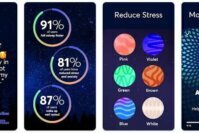Low latency is a term that has attracted a lot of traction from the world of entertainment recently. Provided that video content has become one of the most popular mediums for informing, entertaining, and marketing, low-latency video streaming is the need of the hour as well.
Therefore, if you plan to use video content for your personal or professional needs, you must clearly understand video latency. Only then can you take the proper measures to make the video broadcast smooth and on-point.
In case you didn’t know, some cases of video broadcasting require low-latency video, while others can live without low-latency. Do not worry; I have mentioned all these aspects in this complete guide to low latency in a video.
I have also explained in detail what low latency is and how you can achieve it in your video streams. I would like to add a note that we are talking about low latency in video streaming. You can see the same word used concerning gaming, networking, etc.
Before we talk about low latency, I shall give you an introduction to what latency in video streaming is.
Contents
- What Is Latency in Video Streaming?
- Understanding Low Latency in Video Streaming
- Types of Live Streams that Require Low Latency Video
- Factors that Impact the Broadcasting Delay
- Best Streaming Protocols that Support Low Latency Video
- Frequently Asked Questions About Low Latency Video
- The Pro Review from TechReviewPro
What Is Latency in Video Streaming?
In its literal sense, the word latency means delay. Suppose we are talking about data transfer. In that case, latency would be the time required for the data to travel from the source to the destination. Since we are talking about time, latency is measured in seconds and milliseconds. However, things become a little different when we start talking about latency in video broadcasting.

In the regime of video broadcasting, latency is the time between two points: the point where the content is being captured and the point where the content is shown on a user’s screen.
For example, suppose you are live streaming a soccer game. The scenes captured at 7:30 PM could take up to 7:31 PM to be visible on a user’s screen. In this case, video latency would be 1 second. It means the content takes a time of 1 second to reach the other side.
I should warn you that it is a simplified explanation of video latency. However, this simplified understanding should be enough for most people. As far as the crux of the matter is concerned, you should remember that a user does not get to see the live-streamed content as is.
There will always be some level of latency. Now that you know what latency is, we shall move on to the concept of low latency.
Understanding Low Latency in Video Streaming
Unfortunately, no universal authority decides the standard latency for video streaming — both long-form content like sports and news events and casual content like game streaming. Therefore, each subsection of the industry tries to ensure a specific range of latency.
For instance, some online streaming sessions will try to ensure a latency range between 30 seconds and 1 minute. In other cases, people try to achieve a latency of 5 seconds or 1 second. As I mentioned earlier, some video streams can stay fine with higher latency, while others can be catastrophic when the latency is high.
As a rule of thumb, though, industry experts plan to ensure a latency of fewer than 5 seconds when they want to enable low latency video streaming. However, as we said, some instances require 1 second or lesser of the optimal latency for functioning correctly. For example, online game streaming is an instance where latency must be less than 1 second.
Long story short, the concept of low latency is quite relative! But you have to understand whether the live stream you are planning needs low-latency video broadcasting.
Types of Live Streams that Require Low Latency Video
Now that you know what low latency is, shall we look at some live stream types requiring low latency video content streaming?
Video Chat:
Video conferencing platforms like Skype and Google Meet have to ensure low latency to enable smooth communication. It will be ineffective and weird if the video/audio takes seconds to reach one end from the other.
Therefore, these online meeting and video conferencing platforms will optimize other aspects like video quality to enable almost instant interaction.
Online Game Streaming:
Online game streaming is another instance where low latency video is an absolute necessity. The delay between the actions and display can disrupt the gameplay. Therefore, the latency must be less than 1 second.
In most cases, the latency must be less than 100 milliseconds for a smooth multiplayer gameplay experience.
Auctions and Casino Games:
Auctions and casino games that involve time-bound transactions also require low-latency video streaming. We must also note that these events try to include in-place and remote bidders at the same time. Therefore, to avoid the upper hand in-place bidders may have, low-latency video streaming is a must.
Other Interactive Events:
Any other interactive event that involves two-way participation requires a low latency streaming system. For example, we can think of Q&A sessions and other time-bound live events. It would not be nice if a participant had to wait for seconds until the question reached the other person, right? Well, the good news is, dedicated live-streaming software these days allow you to do that.
If your live stream does not belong to these categories, low latency would not be a must. For instance, if you live-stream an event, a latency of 1 second or 5 seconds would not matter. Unless there is someone who is attending the event in person and watching the live stream simultaneously, no one can tell any difference.
But, if you indeed need low latency video streaming, how do you get that? Well, there are a few ways.
Factors that Impact the Broadcasting Delay
Shall we have a look at the critical factors that can impact the broadcasting delay? You may have to optimize one or more of the following aspects if you want to enjoy the lowest-latency streaming. But, of course, it means making a few compromises in some departments.
1. Network Bandwidth
Network bandwidth is probably the most crucial factor that determines the video latency while streaming or broadcasting video. You must have an internet connection that can upload the recorded content without buffering. In addition, the connection must be stable to avoid frame drops and other disruptions.
2. Connection Mode
Wired connections are better than wireless connections when it comes to video streaming. In particular, you can rely on optic fiber cables that work better than conventional coaxial or dial-up connections. Wi-Fi should be the last option if you are looking for the lowest possible latency.
3. Distance
You cannot enable low latency video streaming if you are located far away from the ISP or internet hub. On the other hand, if you are using satellite internet, your broadcasting station must be close to the satellite. In short, the closer you are to the hub, the lower the latency.
4. Video Format
Not all video formats are suitable for low latency streaming. Therefore, you have to choose a video format that works well with the streaming platform. Ideally, you must select a video format that does not have a large file size but ensures standard quality.
5. Encoding & Bitrate
The video encoding algorithm and bitrate will also affect the latency of the video broadcast. Therefore, you have to choose an algorithm that retains maximum quality while keeping file size minimum. Some level of optimization from the streaming solution is also needed in this department.
Also Read: What is Video Bitrate? Video Bitrate Explained for Beginners
6. Streaming Service
As important as the other factors are, the streaming service you are using for the streaming, is equally important. You should see if the streaming service supports low-latency video. If it does, you should confirm that your video content has everything required to meet the low-latency streaming conditions.
In addition, some entertainment platforms like YouTube and Twitch may have different requirements for what they consider low-latency video transmission.
For instance, YouTube still does not have full support for streaming in 1440p or 4K quality. So instead, you have to settle down for 1080p streaming if you want the low latency support.
Now that you know about the factors that optimize your video content for low latency streaming, we must look for the best streaming protocols.
Best Streaming Protocols that Support Low Latency Video
You have to choose the suitable streaming protocols that enable low latency video. Here is the problem: you do not have complete control over the protocols due to compatibility concerns.
Sometimes, you may have to change your encoder settings for the sake of a streaming protocol — or vice versa. Here are the best shots you have:
WebRTC from Google
If I have to recommend the most effective streaming protocol, it will be WebRTC from Google. It’s an open-source protocol that Google launched back in 2011. Since then, it has been a part of services like Google Hangouts and Google Meet.
Google has designed WebRTC to enable hassle-free data exchange between two browsers with minimal impact on quality.
Since the protocol is designed with peer-to-peer messaging platforms in mind, it is suitable for video transmission. However, the problem with WebRTC is the complex server setup it requires.
In addition, not many Content Delivery Networks offer support for WebRTC, either, making it a tough choice for beginners. However, I hope WebRTC becomes more accessible in the future.
HLS & Dash
I already mentioned that the industry aims to achieve a latency of fewer than 5 seconds with video streaming.
HLS & DASH are considered the best alternatives to WebRTC from this viewpoint. You can use one of these protocols to bring the latency down to as low as five seconds.
This protocol works by creating video segments that can quickly be sent to the endpoint device.
Because these segments are smaller, the transmission becomes easier. These segments are joined by the endpoint device and shown to the user.
It uses a technology called Common Media Application Format to reduce the latency of the transmission. Unlike WebRTC, HLS & DASH require a less complex server setup. So, you can find better CDN support.
Miscellaneous
There are other streaming platforms as well, like RTMP and Mixer, but they are rarely used or shut down. So, if you want to ensure maximum compatibility, you should stay away from these protocols.
For instance, it does not make sense to use the RTMP protocol as it depends on the Flash Player, which is almost extinct. In the same way, Mixer from Microsoft has been shut down. So, you would not have much luck there.
You can also find other adaptive protocols used by companies like Apple and Adobe. For instance, Apple uses the Apple HLS protocol.
Similarly, there is the Smooth Streaming protocol from Microsoft and HTTP Dynamic Streaming protocol from Adobe. Whether you can use these protocols will depend on the recording gear and encoding systems you use.
Conclusively, it is better to stick to HLS & DASH if you want the smoothest low-latency experience. They do bring the best of compatibility and performance.
Frequently Asked Questions About Low Latency Video
Which low latency is best?
We cannot say a particular latency is the best. The real answer to this question depends on the streaming situation.
For instance, when you are streaming something interactive, you need a latency of less than 1 second. Otherwise, the communication will be unstable.
On the other hand, if you are streaming a non-dynamic event like a music concert, a latency of 5 seconds would not be a problem. You can use the basic logic to understand whether a high latency would ruin the streaming experience and decide accordingly.
Is low latency good?
Yes, in the world of video transmission and streaming, low latency is good. Low latency means the video stream would reach the end-user within the shortest time possible.
Low latency often becomes a necessity when you are streaming games, Q&A interactions, and other live events where participation is needed. There are rarely any occasions where low latency is bad (unless you want to delay the streaming deliberately)
How do I check latency?
Checking the video latency of a transmission can be a little difficult based on where your audience is. As I said, latency is the time difference between when the live stream is captured and when it is shown to the user. Therefore, you have to understand when the end-user sees the video.
Most streaming services will have a built-in module that provides you with these analytics. If such tools are unavailable, you may have to check with manual testers.
How do I stream low latency?
Unfortunately, streaming low latency is not a simple mode that you can turn on. To enable low-latency video streaming, you must optimize the content, transmission channel, and streaming protocol. The wrong combination of these things can ruin the overall streaming experience.
For instance, if you record the content in high quality but do not have a powerful internet connection, the stream would be non-ideal.
Should I enable low latency mode?
If your streaming solution/platform has a low latency mode, you should probably turn it on. Here is the problem, though. Some platforms may reduce the content quality in order to keep the latency low. So, the final call depends on your priority.
If you can live with a low-quality stream for the sake of speed, you should turn on the mode. On the other hand, if you can afford a few seconds’ delays, using the non-low latency mode would be okay.
The Pro Review from TechReviewPro
I believe this article provides a clear understanding of low latency video streaming. As you have seen, if you want to enable low latency streaming, you need access to the proper hardware, protocols, and video streaming services.
Otherwise, you could be left with high-quality videos that you cannot stream properly. You can enable this by doing proper research before confirming the streaming platform/solution that you want to use.
What questions or doubts you have got in your head about low latency video streaming? Do let me know in the comments section below, and I’ll try to answer it for you.
Also Read:




